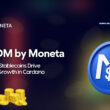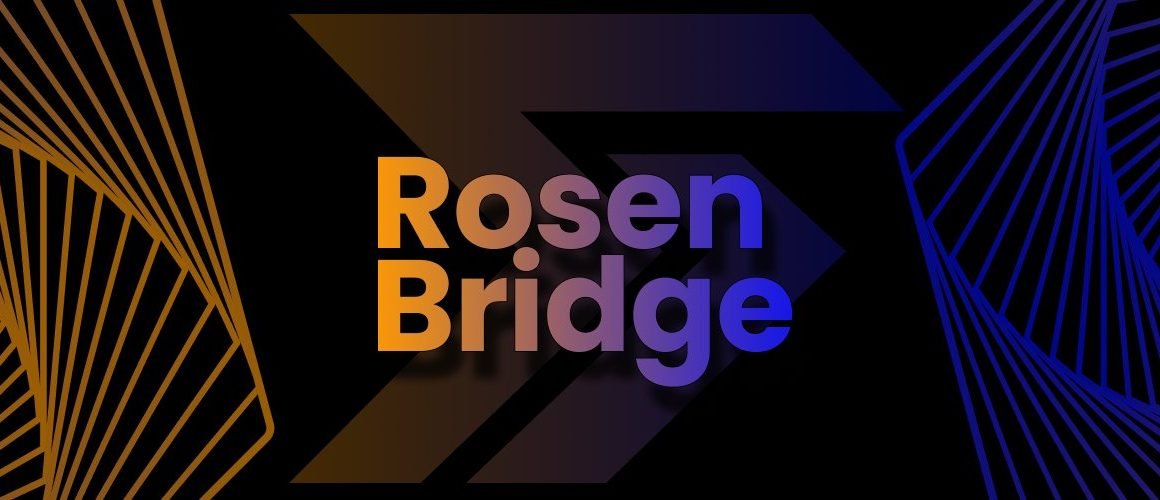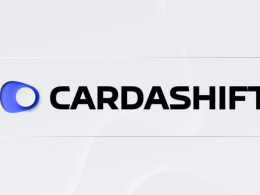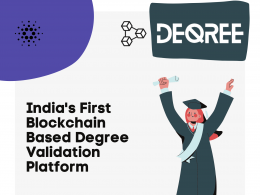Introduction
Stake pool operators (SPOs) are the backbone of the Cardano blockchain. They validate transactions and add new blocks to the chain. However, revenue streams are limited to delegation and occasional Initial Stake Pool Offerings (ISPO). That’s why the infrastructure and expertise of SPOs can be bootstrap to provide additional services and create value for the Cardano ecosystem, aside from the traditional validation and minting blocks. The teams at Spectrum Labs, those who developed the Rosen Bridge connecting Cardano and Ergo, and zenGate Global want to provide this opportunity to SPOs by securing and validating bridge activity with their proposal New SPO revenue streams for securing bridge infrastructure.
Impact
Bridges in crypto are a way to link two different blockchains in order to be able to send tokens between them. This often involves developing smart contracts on both chains to be able to wrap and unwrapped tokens at ease. Due to their extensive attack surface, they are often the target of attacks by malicious actors that search for vulnerabilities to exploit and steal the tokens held in these smart contracts. Chainalysis estimates that over $2 billion dollars have been stolen across 13 different separate hacks.
The Rosen Bridge utilizes a 2-layer validation framework and is currently operational between Cardano and Ergo. The team is looking to draft and submit a Cardano Improvement Proposal (CIP) and build out the required tooling to onboard SPOs to validate bridge transactions while earning rewards for doing so. Starting with a small working group of established and recognized SPOs, they will help guide the initial direction of the project. During the initial phase, the support and adoption of stake pool operators is crucial to have the most robust security assumptions.
The bridge infrastructure will be used to connect Cardano and Ergo at this point in time, but in the future it can be used to connect Cardano to other (E)UTXO based blockchains. Perhaps even, every blockchain of the UTXO Alliance. Providing more interoperability, liquidity, project activity and collaboration across the board.
The success of the proposal will be measured by the deliverables provided to advance the project. The first step is the completion of the CIP that will lay the groundwork for the next steps of the project. Tokenomics will also have to be researched and designed properly to provide a framework of economic incentives that make sense for SPOs to invest time, hardware and money on securing the bridge. The next step is the beta launch which will onboard 30 SPOs as watchers of the bridge. Afterwards, during the production launch 30 more SPOs will join as watchers as well. Once 60 SPOs are onboarded and actively securing the bridge, the project will release documentation to empower any SPO that wants to join to be able to do so on their own.
The open source nature of the Ergo blockchain also shows in this proposal where every development update will be open source. The team will regularly update the documentation and code available in their github repository. Educational content will also be developed composed of onboarding videos and documentation on how to get started with securing the bridge.
Feasibility
The core team is composed of heavyweights in the blockchain space with extensive experience in the industry, who have delivered a series of successful products in Cardano and Ergo ecosystems.
The main applicant is Daniel Friedman, current advisor to the Ergo Foundation and co-founder of zenGate Global. He was also part of the early IOHK team that helped launch the Cardano blockchain.
Mohammad Hasan Samadani is lead developer for the Rosen Bridge project. Holds a PhD in computer science and has over 12 years of experience in security, software development and team management.
Joseph Armeanio currently a board member and manager of business development at Ergo Foundation.
Theodore Morisis stake pool operator of Chef pool, community educator, Cardano Ambassador and community manager at zenGate Global.
The rest of the team is composed of subject matter experts and advisors to the project.
Alexander Chepurnoy is the co-founder of the Ergo and Chainlink blockchains. One of the first employees at IOHK, he contributed twenty plus academic papers to the industry.
Yasha Black co-founder and CPO of Spectrum Labs and Protocol.
Ilya Oskin core developer for the Ergo blockchain. Co-founder and CTO of Spectrum Labs and Protocol.
Sam Lambert co-founder of zenGate Global.
Since Fund 10, proposers of Project Catalyst need to provide a detailed explanation of the project’s milestones and the main tasks or activities to complete them. The proposal has an intended development lifecycle of six months or twenty-six weeks. During the development period five different workstreams will be advancing the project in different areas.
Workstream 1: Incentivisation and rewards model working group
The first working group of the project focuses on the incentivisation and rewards model which will take place during the first eight weeks. Firstly, they will establish a small working group comprising Cardano community members and subject matter experts who specialize in stake pool operation incentives for Rosen Bridge security. This group aims to gain a comprehensive understanding of the incentives involved. Secondly, they are responsible for designing the bridge tokenomics, which will be an iterative process involving consultations with various stakeholders such as SPOs, community members and others. The goal is to create a robust and effective tokenomics framework. Additionally, the group will engage in discussions pertaining to fee tiers, fee models, and profit distribution design, ensuring a fair and sustainable system.
In terms of deliverables, the group will conduct four working group sessions with active participation from SPOs and subject matter experts. These sessions will provide valuable insights and input into the rewards model. The group will then present the rewards model, seeking alignment and consensus on its design. Finally, they will summarize the meeting minutes and key findings from the working group sessions, providing a concise overview of the discussions and outcomes. This will aid in documenting progress and sharing important information with stakeholders.
Workstream 2: SPO tooling – scoping and design
The second working group of the project focuses on SPO tooling, specifically on scoping and design. During the first eight weeks of this workstream, the team will primarily focus on two key activities. The first activity involves gaining a deep understanding of the existing SPO infrastructure and their capabilities as watchers. This will be accomplished by engaging in conversations and interviews with SPOs within the ecosystem. By gathering insights from SPOs, the team aims to assess the current state of infrastructure and identify any gaps or areas for improvement. The second activity revolves around completing the design and specifications document for the SPO tooling. This document will serve as a crucial reference for the team, providing guidance on how to build the necessary tools. To ensure that the tooling meets the requirements of SPOs, the team will also conduct working group sessions, actively involving SPOs in the process to gather their feedback and understand their specific infrastructure and tooling needs. Ultimately, the goal is to have a comprehensive design and build specifications documentation that addresses the identified requirements and supports SPOs effectively.
Workstream 3: Cardano Improvement Proposal
The third workstream focuses on the development of a Cardano Improvement Proposal (CIP) draft, specifically during weeks 4 to 8 of the project. The team’s main objective is to create a CIP that will facilitate the creation of appropriate tools on the Cardano platform, enabling stake pool operators (SPOs) to participate in the Rosen Bridge solution effectively. To achieve this, the team will engage in extensive communication and collaboration with various stakeholders throughout the CIP drafting process. This ensures that all relevant perspectives are considered and incorporated into the proposal. Once the initial draft of the CIP is completed, it will be shared with the broader Cardano community. The team will actively seek community feedback and input to refine and improve the CIP further. By iteratively incorporating community feedback, the team aims to create a comprehensive and well-rounded CIP that addresses the needs and requirements of SPOs while aligning with the broader Cardano ecosystem.
Workstream 4: Development of SPO tooling
The fourth working group is focused on the development of SPO tooling, covering a span of 8 to 24 weeks in the project timeline. The workstream has established several project milestones to guide its progress. Firstly, the team will develop the necessary smart contracts and off-chain tools required for the implementation of the SPO tooling. Additionally, they will design an open-source Rosen Suite, which serves as a toolbox for new chains or sidechains, facilitating their integration and operation within the Cardano ecosystem. The team will also develop a user-friendly interface for SPOs to interact with the tools effectively. Ensuring the security and reliability of the developed tools is a priority, thus conducting thorough security and code audits is another milestone. Extensive testing will be conducted on the testnet to ensure the stability and functionality of the tooling before its deployment on the mainnet. Furthermore, the team plans to run a Beta program involving select SPOs to gather real-world feedback and identify any necessary refinements or improvements.
The deliverables for this workstream include building the Rosen Easy-Install Module to simplify installation for SPOs, completing the Rosen interface and dashboard for SPOs’ convenience, finalizing the design of the Rosen Suite, conducting comprehensive code audits, and concluding the Beta testing phase with a cohort of SPOs. These deliverables contribute to the overall goal of providing robust, user-friendly, and secure tooling for SPOs to effectively participate in the Cardano ecosystem.
Workstream 5: Onboarding, education and bootstrapping
The fifth workstream is dedicated to onboarding, education, and bootstrapping, taking place from week 20 to 26 in the project timeline. The first milestone involves building and open-sourcing an instruction manual that provides a clear and comprehensive guide for stake pool operators (SPOs) to onboard as watchers for the Rosen Bridge solution. This manual will ensure that the onboarding process is accessible and straightforward for SPOs. The second milestone is the publication of educational material, including video explanations, AMAs (Ask Me Anything sessions), and blogs. These materials aim to enhance community understanding and alignment with the project by providing valuable educational resources.
As for deliverables, the team will prepare documentation specifically designed for the mainnet launch, facilitating the onboarding process for new SPOs as watchers. In addition, they will publish educational material to disseminate knowledge and increase awareness about the project. Lastly, the team will conduct outreach efforts to encourage more SPOs to participate, ultimately improving the decentralization of the watcher set. The deliverables of this workstream collectively contribute to the overall goal of ensuring a smooth onboarding experience, fostering community engagement, and promoting the decentralization of the Rosen Bridge watcher set.
Value for money
Another modification for Fund 10 is that the budget is now in ADA and not in USD. This makes sense from the perspective that we are working to develop a new decentralized financial operating system but at the same time most projects need to pay for goods and services in fiat money. This brings a new challenge to the table since now teams need to ask for a coherent budget in a volatile currency.
The team is asking for 850,000 ADA to complete this proposal. This represents 17.94% of the total budget allocated to this challenge category. The budget is further broken down into the different workstreams detailed previously.
The first workstream for incentivisation and rewards model requires a budget of 60,000 ADA to cover the eight weeks of work for a tokenomics lead, a project manager and a project analyst. This means a 2,500 ADA payment per week for the three positions. At current market value at the time of writing this article ($0.31 ADA/USD) this translates to $775 USD per week per position and a total of 18,600 USD.
The second workstream dedicated to SPO tooling, scoping and design requires a budget of 50,000 ADA. This covers the positions of a lead backend developer and another backend developer for eight weeks and a project manager to support integration plans for four weeks. At current market value this translates to a total of 15,500 USD.
The third workstream will work on the CIP for four weeks. This will require a technical lead writer and a developer to support them. The budget stands at 40,000 ADA or 12,400 USD.
The fourth workstream developing the SPO tooling takes the highest percentage of the total budget with a requirement of 550,000 ADA or 170,500 USD. This will cover a backend team composed of a lead and three engineers to build the installation module, Rosen Suite and iterating on beta launch feedback. An UX lead to design the SPO tooling suite and dashboard for six weeks, a frontend developer to build the UX requirements for eight weeks, a security auditor for three weeks and a project manager for six weeks.
The fifth and final workstream which will focus on onboarding, education and bootstrapping requires a budget of 150,000 ADA or 46,500 USD. This will cover marketing team members, a technical writer and a video editor for six weeks and a lead developer to review and support documentation for four weeks.
The project is fully open source and the majority of the budget will be dedicated to develop tools for SPOs that can be modified and tinkered by other actors in the ecosystem, contributing to their future applications. The Rosen Suite will enable it to easily set up a watcher to secure the bridge and this functionality can also be used to implement security over other Cardano sidechains. The rest of the budget will be used to engage with SPOs on design choices and rewards systems. The team will also need to spend time onboarding SPOs to secure the bridge.
Q&A with the team
Q1: The team is composed of seasoned developers in the blockchain industry with a track record of delivering products and services. However, everyone involved is also working on other important projects like Spectrum Finance and zenGate Global. Is the timeline of 26 weeks realistic to accomplish everything, given the amount of extra workload it would mean for the people involved?
A1: There are clear divisions between roles and responsibilities for this project in order to be successful. The Rosen Bridge team will be spearheading the technical development and is supported by a much larger team of developers – beyond Joe Armeanio and Mo. Similarly, the zenGate team will be allocating full time resources to ensure the SPOs are smoothly onboarded and workshops are completed – Theodore will be leading these efforts. Finally, the Spectrum founders as well as Alex, the founder of Ergo will be dedicating time to auditing the code and supporting any other non-technical requirements.
We believe that the 26 weeks is a realistic timeline to accomplish our tasks – the proposal amount requested is a good reflection of the size and scale of what we are going to deploy.
Q2: In the budget breakdown there is an overlap for the SPO project manager for workstreams number 1, 2 and 4. Is this the same person that will fill this position or several different ones?
A2: Workstreams 1 and 2 will be both run by Theodore (our SPO project manager). This is absolutely essential as there is significant overlap between the deliverables and efficiency gains will be made by empowering the same manager to lead this. Workstream 4 will begin right afterwards and will not require a new manager to fill this position.
It is also important to note, the SPO manager will be supported by analysts from the zenGate team from time-to-time (resources zenGate will provide) to smooth out more involved periods of work.
Q3: The total budget amounts to 850,000 ADA which represents 17.94% of the total budget allocated to this challenge category. Which ADA/USD rate has the team considered when calculating the budget? Is there a risk of the proposal not being able to be completed in case the ADA valuation drops below your exchange rate? In the case that the valuation is higher than expected at the time of receiving the funds, are there bonus functionalities the team would consider adding?
A3: The team has assumed a rate of around 1 ADA = 0.3c US when calculating the budget. As the proposal is denominated in ADA, we are very much aware of the potential risk that the price of ADA drops. We believe that this is a crucial infrastructure that is required and will deliver upon the proposal either way. If the valuation is higher, the team will likely dedicate more of the resources to further bootstrap the onboarding process and development of the bridge. This could provide an interesting opportunity to accelerate plans to bridge Cardano with other ecosystems as well.
Q4: In the proposal eight different people have been identified that will work in the project. However, there are several positions that need to be filled for backend and frontend engineers, as well as a marketing team. Do you have people ready to fill these positions or the head hunting will begin once the proposal gets funded? Do you anticipate any issues with filling these positions?
A4: The core team will be supported by a number of existing team members from zenGate and Rosen. We have a bench of experienced frontend and backend developers already working on the Rosen Bridge infrastructure as well as members of the zenGate who have experience with project management, marketing and technical writing.
We don’t plan to fill these positions, but rather efficiently allocate existing team members towards these workstreams once funded.
Q5: The key dependency identified in the proposal is regarding alignment with stake pool operators. Have the initial 30 SPOs needed for the beta launch already been identified or selected? Since SPO infrastructure and operational costs are so diverse, do you anticipate any issues regarding the initial steps of designing the right fee tiers, models and profit distribution design?
A5: The proposal team has already been inundated with a number of requests to join the Beta launch (at this stage it will be oversubscribed). We will be opening up a more formal form for SPOs to sign up – this is likely to be a first come, first serve process.
A key part of the project is to understand the SPO operational costs and processes and to align on a distribution model that makes the most sense that incentives them and provides high levels of security. We anticipate a number of unique views and approaches, and this will all be taken into account as we work towards the final iteration of the design. The beauty of these systems are that they can be adjusted – our goal is to ensure opportunity inclusion, provide security and build incentives that connect ecosystems with each other.
Link to Ideascale proposal: https://cardano.ideascale.com/c/idea/103037/










